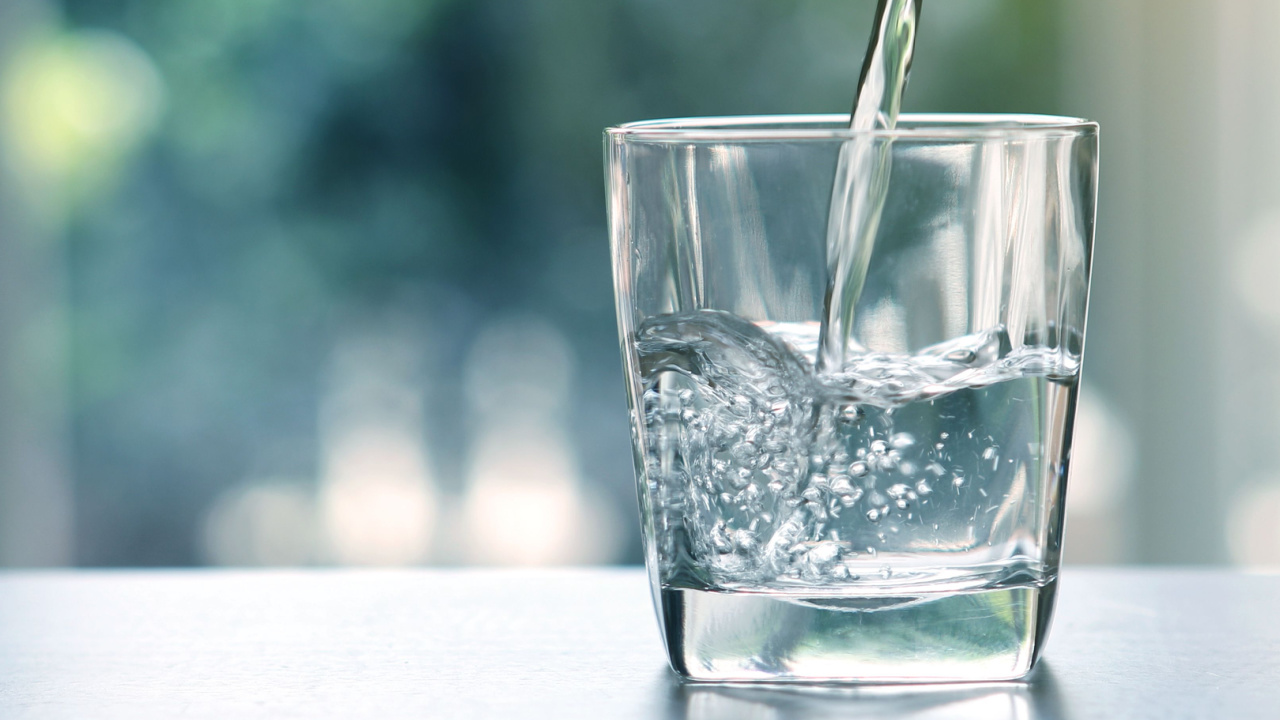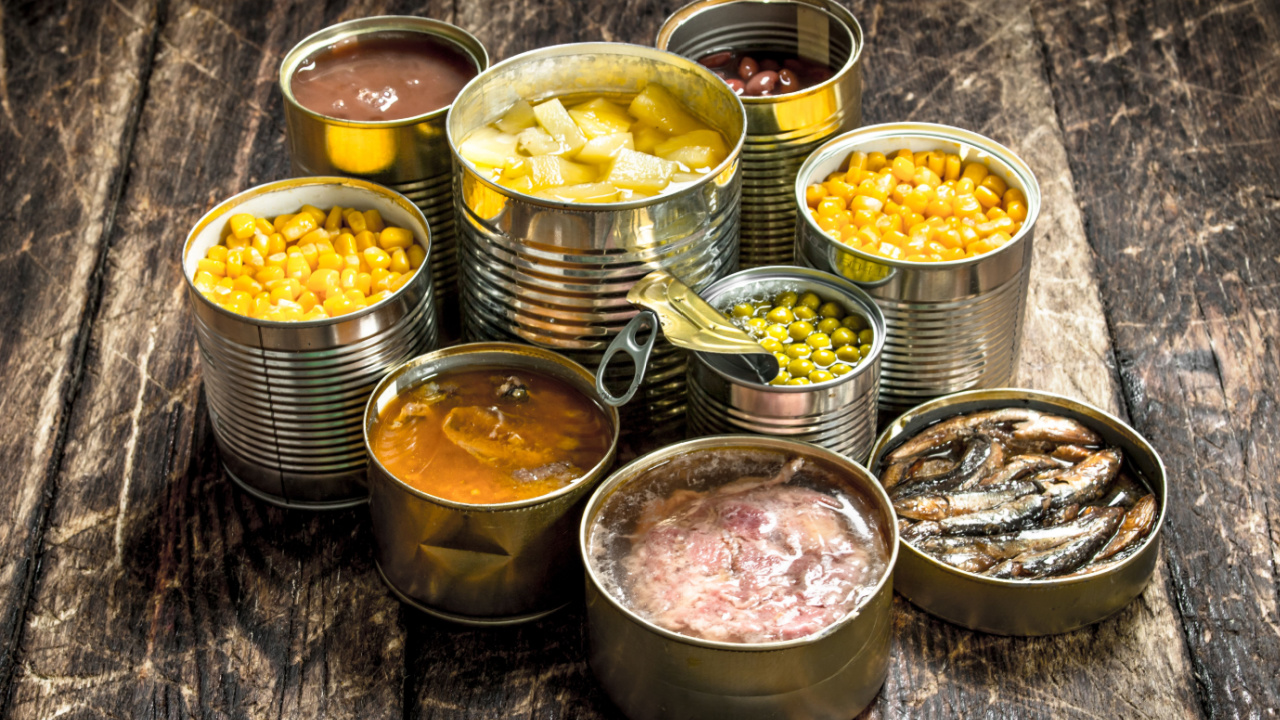If you don’t know how to dry herbs for tea, you’re left with over-priced herbal teas from the store that don’t taste of much and don’t have many beneficial properties, or you have to pay for fresher dried herbs in larger quantities to make your own blends. I much prefer to dry my own herbs. Most of which I grow or forage myself.
As you know, I’m a master herbalist. And one of my favorite things to do is make herbal tea. It speaks to that little girl deep inside who used to make “potions” in the garden from sticks and leaves and flowers. She was a smart cookie – it seems she instinctively knew who she’d grow up to be.
I have all kinds of wonderful recipes, from a simple pine needle tea to a more complex winter Solstice tea. Some are preparations designed to help you with a specific issue, others are purely for the joy they bring. But they all start with drying herbs.
Can You Use Dried Herbs In Tea?

Yes, of course! Drying concentrates the flavors and makes the herbs easier to store and use throughout the year. Whether it’s a soothing chamomile or a zesty ginger tea, dried herbs bring convenience and consistency to your tea-making ritual. My Solstice tea contains an awful lot of ingredients, and I make a large quantity of this blend as it’s one of my favorites. No way I could pull that off if I was just using fresh ingredients.
What is the Best Method to Dry Fresh Herbs for Tea?

Drying herbs for tea requires a gentle approach. When you dry herbs for herbal remedies or homemade herbal tea, you want to preserve the aroma, flavor, and, crucially, the therapeutic properties. The key is gentle, slow drying that maintains the integrity of those precious volatile oils. Air drying is my go-to method. It’s simple and effective. And it makes my house look a little like a witch’s cottage, with bunches of herbs hanging all over the place.
Hang bunches of your favorite fresh herbs, like lemon balm or peppermint, upside down in a warm, airy spot away from direct sunlight. I strip around a half inch of leaves from the base of the stems, then tie them with cotton string, leaving a loop of the cord for hanging. Good air circulation is vital to prevent any mold and to ensure even and faster drying.
Once they’re completely dry, you can make your tea blends or store your herbs in airtight glass jars. If you’re concerned about moisture, place a food-safe desiccant sachet in the jar with your herbs.
When I can’t air dry or I’m working with herbs with high moisture content, I use my dehydrator. Or when my house is just too full of hanging herbs, haha! Some people like to use an oven or a microwave, but it’s much harder to control the temperature to preserve flavor and the compounds that provide potential health benefits. It’s fine to use the microwave or the oven just for drying culinary herbs, but for herbal teas, you’re much better off sticking with air drying or dehydrating.
Can I Use a Dehydrator for Herbs?

Absolutely! A food dehydrator is a fantastic tool for drying herbs, especially if you’re dealing with a large harvest or live in a humid climate. It offers consistent heat and air circulation, ensuring your herbs dry evenly and retain their best flavor. Just remember to set it at the lowest temperature to preserve those delicate oils that make your tea so special.
I have a large Buffalo dehydrator that I absolutely adore. I use it for drying herbs that don’t do well with regular air-drying, for fruit that I want to preserve for teas and remedies but not freeze, and for dog treats. My dehydrator gets an awful lot of use. My dogs are incredibly disappointed when I’m drying herbs instead of jerky or fishy biscuits!
Pine needles, which I use for pine needle tea, do well in the dehydrator, too. They’re difficult to air dry because you can’t really hang them, but on a tray in the dehydrator, they dry evenly and quickly.
Best Herbs for Tea

The best herbs for tea depend entirely on your personal preference. What flavors do you enjoy? What issues are you trying to help? There are just so many options. For example, my recipe for sleepy time tea contains chamomile, passion flower, lemon balm, valerian, lavender, and rose petals. While my happy tummy tea contains ginger root, chamomile, lemon peel, hibiscus flowers, fennel seeds, orange peel, and Ceylon cinnamon.
How to Dry Herbs for Tea

Whichever method you choose, your preparation is the same. Harvest only the amount of herbs you can process and dry at one time. And only harvest them if you plan to use them right away. Wash the herbs in cold water to get rid of any insects or dirt. Lay them on paper towel and pat them dry. Be careful not to crush the herbs.
Remember that we want to preserve their flavor and their beneficial properties, so being gentle and keeping them whole is a priority here. If you’re air-drying, strip the bottom inch of leaves from the stems, wrap the stems with twine and create a loop for hanging. Then hang the bunch of herbs upside down in a dry, well-ventilated room and wait patiently for a week or two until the leaves are crunchy-dry. At this point, you can take them down and gently remove the leaves from the stems for storage.
If you’re dehydrating and not air-drying, after you’ve washed and dried your herbs, strip all the leaves from the stems. Discard the stems. Place the leaves on a rack from your dehydrator.
If the gaps in your rack are too big, place the herbs on a finer silicone mesh mat designed for your machine, or, in a pinch, punch holes in parchment paper, and use a layer of that over the rack instead. Putting holes in the paper lets air circulate more evenly. Dehydrate the leaves on the lowest temperature setting, checking every hour (ish) until the leaves are completely dry but still have their color. Once they’re dry, let them cool for a few minutes, then store immediately.
Is it Better to Dry Herbs for Tea or Should I Use Fresh Herbs?

It’s really up to you. I do a little of both. For most tea blends, I use dried herbs. But during the growing season and for common herbs that grow year-round, like rosemary, I’m just as likely to use fresh herbs.
My usual choice of evening tea is a strawberry, lemon, and ginger tea, and I’ll use fresh ingredients for this tea as I find the flavor better. I use fresh strawberries while they’re in season, and frozen for the rest of the year. Only if my supply of frozen runs out, will I use dried strawberry pieces.
On the other hand, dried herbs offer convenience and, if you’re preserving herbs properly, give a more concentrated flavor, perfect for a robust, hearty cup of tea. Fresh herbs have a more delicate, subtle flavor infusion – think of the light, refreshing taste of fresh mint tea.
Which Herbs Should Not be Dried?

Not all herbs are suited for drying, especially those with a high moisture content like basil, borage, and cilantro. These can mold rather than dry, leading to a less-than-pleasant tea experience. It’s best to enjoy these types of herbs fresh, reveling in their unique flavors and textures that might be lost in the drying process. Or you can dry them in a dehydrator. Or freeze them in ice cube trays and just pop one out when you need it.
What Herbs Make Tea Taste Better?

The beauty of herbal tea is its versatility. Want a bit of zest? Add some lemon verbena or citrus peel. Needing a comfort boost? Chamomile and lavender are your friends. For a refreshing kick, nothing beats mint. And for something unique, why not try chocolate mint or rose petals?
Experiment with blends to create a tea that’s uniquely yours. I’ve been working on perfecting my winter Solstice tea for years, and I think I’m finally there. It’s very popular and contains almost all of my favorite ingredients. I frequently find myself using hibiscus flowers, ginger, citrus peel, cinnamon, rosemary, peppermint leaves, chamomile, and dried fruits. But that’s because those things suit my tastes.
Once you start to experiment, you’ll find you use a different selection of herbs regularly as tea ingredients because you like their flavor. If I’m trying to help with a specific ailment or problem, then I use herbs I know will help with that thing, and flavor and pleasure become secondary concerns. Although I find a good dose of honey always helps improve the flavor of less enjoyable tea blends.
How Long to Dehydrate Herbs for Tea?

How long it takes to dry herb leaves in the dehydrator depends on the herb and the temperature you choose. Generally, it takes between 1-4 hours at a low temperature setting (around 95-115°F). You’re aiming for leaves that are crispy and dry but still vibrant in color. You’re aiming for that sweet spot where the leaves have let go of all their moisture but held onto their flavor and aroma.
Dehydrating is one of the best drying methods, but you’ll need to get to know your dehydrator. Because of how some circulate the dry air, you may need to turn the trays a few times during the drying process for even drying. To speed up the process, make sure you lay the herbs in a single layer to get evenly dried leaves.
How to Store Dried Herbs for Tea

Proper storage is critical. If you let moisture in, the herbs will quickly grow mold and be useless. I store my herbs in glass mason jars in the pantry. I know some people say you can store dried herbs in a jar in the fridge. And you can. But the problem is that when you take that jar out of the fridge into a warmer setting, even just for a minute while you grab a few leaves for your tea, condensation forms in the jar. Which causes mold to form. So store your herbs in airtight containers in a dry, dark place. And add a food-safe desiccant pack if you want to be extra safe.
How Long Do Dried Herbs Last?

Properly dried herbs don’t really go bad. But they do lose their flavor and potency eventually. Most herbs are good enough for herbal tea for one to three years. But if you also want them for their healthful benefits, I would only use herbs under 12 months old. For older herbs that still have scent but maybe don’t have enough flavor to make good herbal teas, I make little scented pillows with them to fragrance clothes, drawers, and bed linen.
How to Harvest Herbs for Tea

Timing is everything when harvesting herbs for tea. The best time is just before the plant flowers, when the oils are most concentrated. Gently snip the leaves or stems early in the morning after the dew has dried. This way, you capture the essence of the plant at its peak – a secret to a truly magical cup of tea.
Only harvest what you need or can process right away. My other strong recommendation is to be gentle and to take care while you’re harvesting herbs. Don’t pull at and tear the plant. Use sharp scissors or a knife to carefully harvest herbs with clean cuts. This preserves the herbs you’ll be drying and limits damage to the still-growing plant.
Creating Your Own Tea Blends

Blending your own herbal tea blends is really satisfying and involves a lot of experimentation. As I said earlier, it brings out my inner child who found complete peace and joy in making her “potions” in the garden. Not that I would want to drink any of the random concoctions I made when I was little!
Don’t be afraid to play around. Find what you like and don’t like.
Consider whether you’re going purely for flavor or if you want to help calm your mind, aid digestion, or invigorate yourself. Do you want a caffeine boost from a green tea base? Or would you rather start with something calming and fairly neutral, like chamomile? Do you like spicy? Citrus? Earthy?
Play around. Start simple then, as you start to figure out what you like, you can come up with more complex blends with many flavor layers.
The Art of Brewing the Perfect Cup

Brewing herbal tea is simple yet profound and a significant part of many people’s self-care routine. I have a very good friend who uses tea-making as a mini meditation. Boil fresh water, let it cool for just a minute or two, and pour it over your herbs. Steep for about 5 to 10 minutes, depending on how strong you like your tea.
Be patient. The longer you let your tea steep, the more the flavors develop. In spite of what you’ll see on many other websites, you do not need any fancy equipment. I use a fine-mesh coffee basket. But outside of something to infuse your herbs into the water, and an airtight container to store the herbs in, you do not need anything special or fancy.
Growing Your Own Herbal Tea Plants

Now, I don’t grow everything for my herbal tea, but I do grow as much as I can. And I forage, too. What I can’t grow or forage, I buy. But there is something undeniably satisfying about going outside and harvesting the herbs that I’ve grown, often from seed or a cutting, once they’re mature and ready to imbue my tea with their flavor and healthful properties.
Rosemary, lavender, sage, basil, mint, valerian, thyme, raspberry, strawberry, blueberry, borage, lemon balm, hibiscus, and more grow prolifically on my property, so I always have plenty to harvest, preserve, and share, with lots left over to keep growing.
20 Crucial Supplies for Surviving a Societal Collapse

In the face of uncertainty, being well-prepared gives you at least some degree of control and security. The thought of a societal collapse, while extreme, prompts us to consider how we might endure without the conveniences of our current lifestyle. Here’s a list of 20 essential items that could prove indispensable in such a scenario. This guide isn’t about succumbing to fear but embracing preparedness and resilience.
14 Essential Canned Goods for Your Emergency Pantry

I firmly believe in keeping a well-stocked emergency pantry. While fresh food is ideal, in a survival situation, we may not be that lucky. So, for my family, even though we grow a lot of our own food, canned goods play a crucial role in emergency preparedness. They offer a reliable source of nutrition when access to fresh produce may be limited. The goods you stockpile should be affordable, easy to store, and full of nutrition.
Best Regions in the U.S. to Escape to When Society Collapses

Choosing a refuge in the event of societal collapse involves weighing the pros and cons of each location against your personal preparedness goals and abilities. Whether you’re drawn to the solitude of the desert or the protective heights of the mountains, the key is finding a place that offers safety and the opportunity for growth and renewal.
Katy Willis is a writer, lifelong homesteader, and master herbalist, master gardener, and canine nutritionist. Katy is a preparedness expert and modern homesteader practicing everyday preparedness, sustainability, and a holistic lifestyle.
She knows how important it is to be prepared for whatever life throws at you, because you just never know what's coming. And preparedness helps you give your family the best chance to thrive in any situation.
Katy is passionate about living naturally, growing food, keeping livestock, foraging, and making and using herbal remedies. Katy is an experienced herbalist and a member of the CMA (Complementary Medical Association).
Her preparedness skills go beyond just being "ready", she's ready to survive the initial disaster, and thrive afterward, too. She grows 100% organic food on roughly 15 acres and raises goats, chickens, and ducks. She also lovingly tends her orchard, where she grows many different fruit trees. And, because she likes to know exactly what she's feeding her family, she's a seasoned from-scratch cook and gluten-free baker.
Katy teaches foraging and environmental education classes, too, including self-sufficient living, modern homesteading, seed saving, and organic vegetable gardening.
Katy helps others learn forgotten skills, including basic survival skills and self-reliance.
She's been published on sites such as MSN, Angi, Home Advisor, Family Handyman, Wealth of Geeks, Readers Digest, and more.
